Voting open for the Society of Garden Designers People's Choice Award 2022
Have your say by voting for your favorite entry in the Society of Garden Designers' People’s Choice Awards 2022

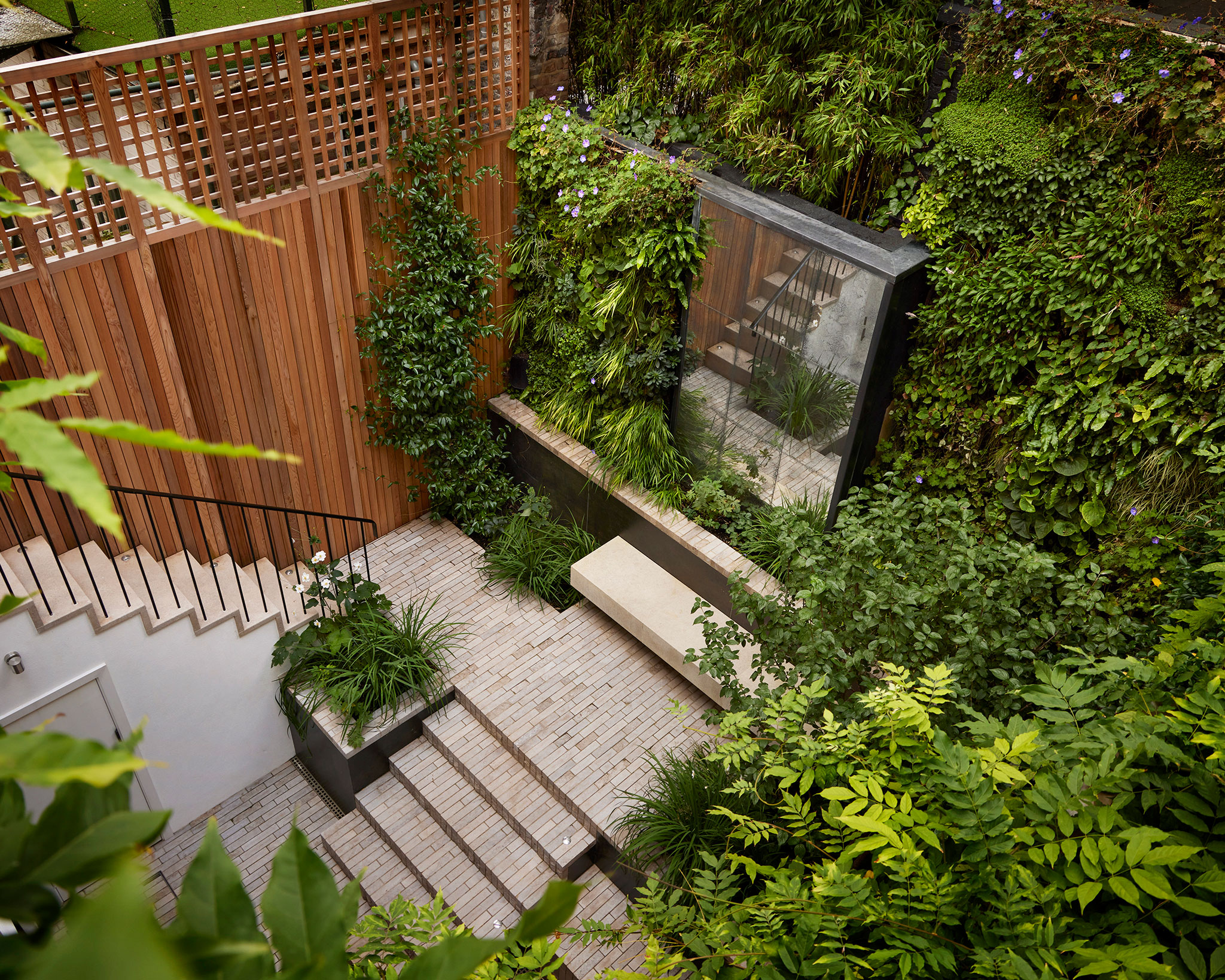
The Society of Garden Designers Awards celebrate the very best in garden design innovation and voting has now opened for the People's Choice Award, the only award that is decided by public vote.
Members of the public can choose their favorite garden from a shortlist of 15 eligible projects, ranging from a large rural garden situated among vineyards and olive groves of a Tuscan estate in Italy, to a tiny courtyard in Kensington.
Sponsored by Homes & Gardens, the People's Choice Award entries have been chosen by an independent judging panel of industry experts from among the Society of Garden Designers Awards 2022 shortlist. They include captivating garden designs from across the UK and abroad, with some of the brightest new names in garden design alongside some of the most established designers.
See below for details of all the entries in this year's Society Of Garden Designers People's Choice Awards and then vote for your favorite on the voting page of the SGD website, where you can also find more images of each of the shortlisted entries.
The voting is open from 1 July until 31 July 2022. The winner will be announced at the awards ceremony, along with the rest of the winners on 23 September 2022.
Society of Garden Designers People's Choice Award – the shortlist
The People's Choice Award offers an exciting opportunity for you all to have your say in which you think is the best garden design. With so many fantastic entries, it won't be easy, but enjoy looking at all of the inspiring designs and then vote for your favorite.
Acomb High House, designed by Matthew Wilson
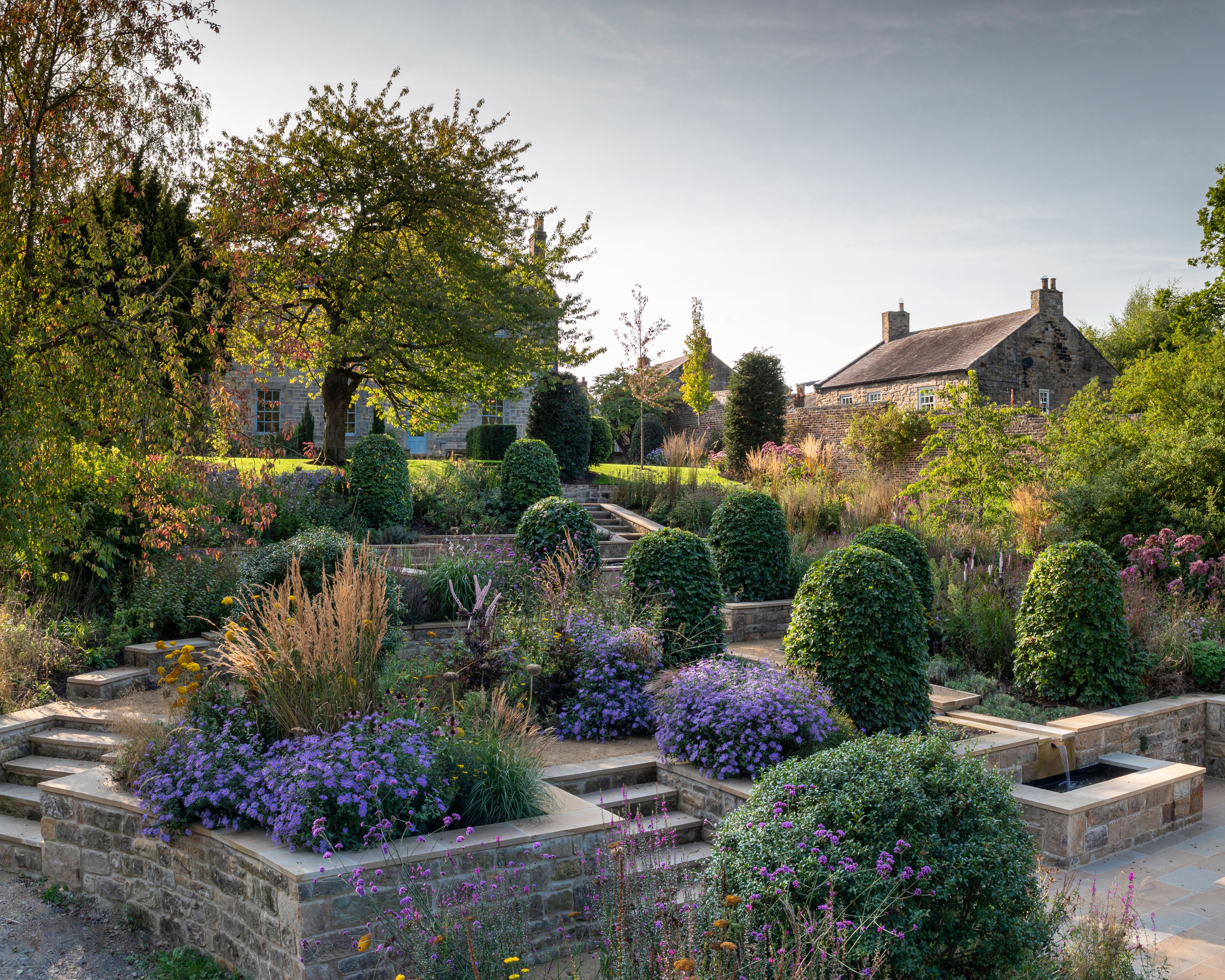
This design by Matthew Wilson was for an old walled garden.
'While the client was open to exploring all possibilities for the design, they were explicit that the garden should be wildlife friendly, and that wherever possible the materials already on site – including large quantities of local walling stone – should be re-used,' he explains.
Design expertise in your inbox – from inspiring decorating ideas and beautiful celebrity homes to practical gardening advice and shopping round-ups.
Paving stone and gravel for the footpaths were sourced from a local quarry, and many existing plants were dug up and retained to further reduce the carbon footprint of the project.
Low maintenance ornamental plants were selected, with pollen and nectar rich perennials and flowering and fruiting trees and shrubs.
Alexander Square, by Stefano Marinaz

Split over two levels, the design of this garden by Stefano Marinaz increased planting beds while retaining space for dining al fresco in the summer.
'Even though the garden is South-West facing the large Catalpa tree provides a lot of shade to the garden and influenced the type of plants chosen. Above the dining table we hung pendant lights from simple stainless steel wires that also allow climbers to grow on,' Stefano explains.
The feature fencing utilises iroko vertical elements of different width and depth alongside some decorative bronze details that resemble a wooden pattern.
A Sense of Discovery, designed by Stefano Marinaz

Garden designer Stefano Marinaz recreated the 'jungle' feel of this previously overgrown Queen's Park garden through considered planting, with a meandering path creating a sense of discovery.
'The garden was split in 3 different areas and we concentrated our design on the section closer to the house, which includes the terrace and the garden up to the metal arch,' he explains.
The existing large Robinia sp. and Syringa sp. were retained and incorporated within the scheme, while the rest of the planting has an emphasis on perennials and bulbs combined with shrubs that provide interest all year round.
Bishop's House, Rwanda, designed by Chloe Humphreys
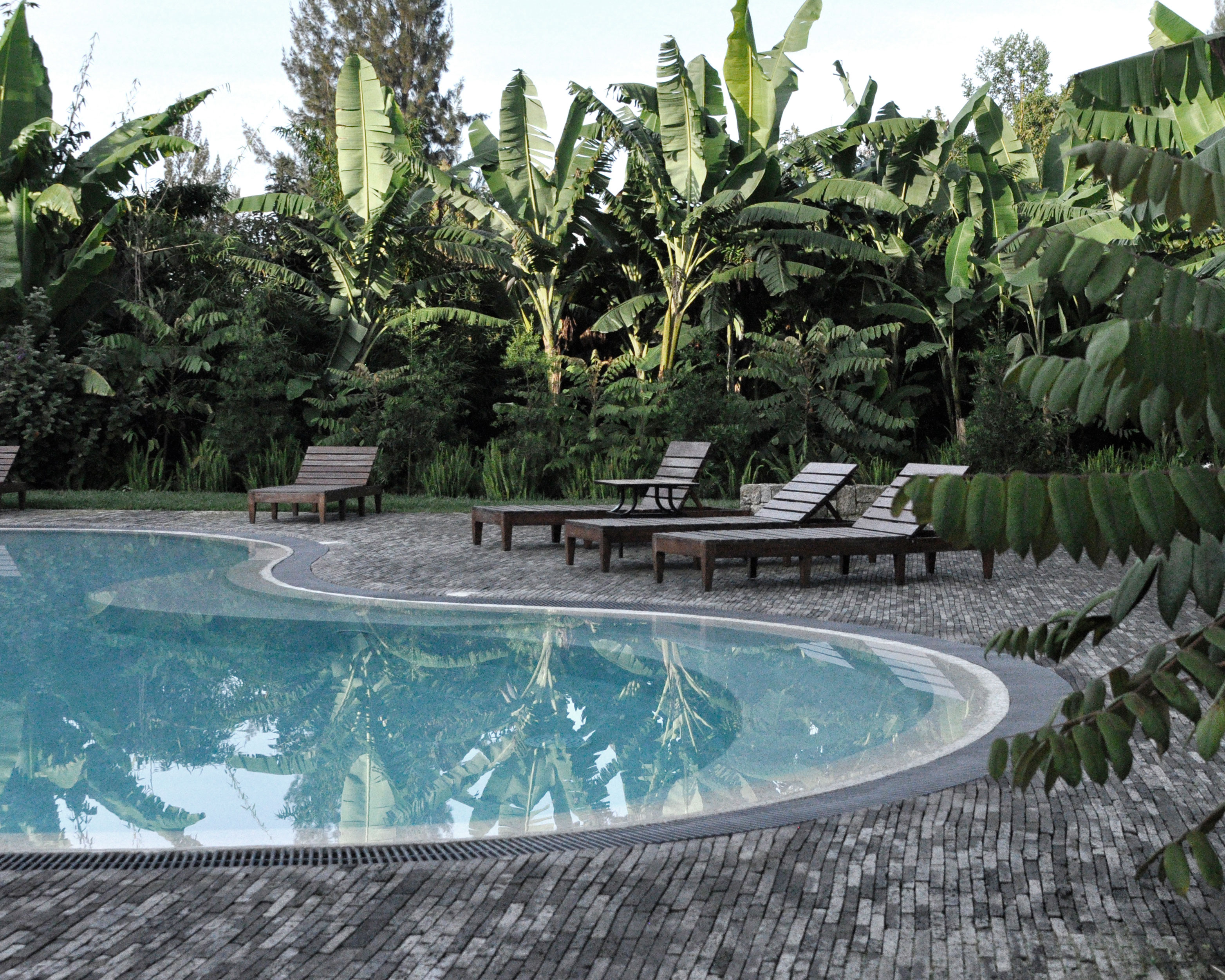
This design by Chloe Humphreys meets the requirement of a calming and private garden for guests in a suburban hotel in the heart of Ruhengeri, Rwanda.
The brief was for the garden to be in keeping with the location's existing flora and architecture; providing screening and privacy from neighboring buildings was important.
Chloe says: 'Being in a highly volcanic area the most easily available stone is volcanic stone and we celebrated this unique stone within the design. Using locally sourced materials often is the most sustainable solution as the carbon footprint of the projects are much reduced.
With most of Rwanda farmed, she used a dominant crop, the banana, within the planting design to create fast privacy while waiting for the combination of indigenous trees to grow. 'This has resulted in a unique project which is wholly encompassing of a sense of true identity to the site and to the project as a whole,' she says.
Chelsea Townhouse, designed by Adolfo Harrison
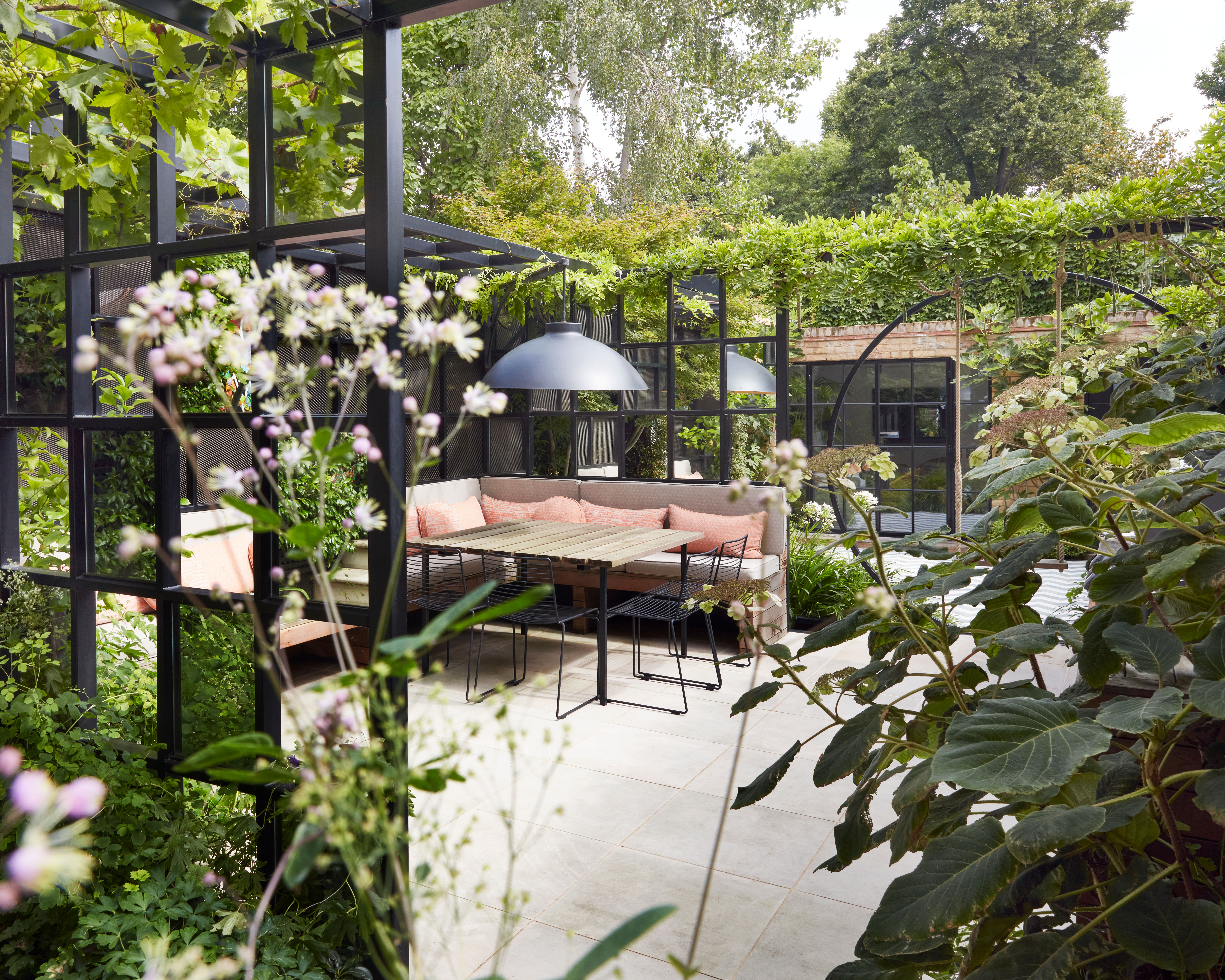
This family garden designed by Adolfo Harrison reflects the personalities of the Irish and Italian owners, providing spaces to entertain and lounge in both sun and shade.
'The concept was to create a seamless flow of spaces that starts the moment you walk through the front door of the house till you reach the garden studio at the end, via three outdoor rooms, and by doing so removing any hierarchy between the indoors and out,' explains Adolfo.
Crittall windows from inside the house were taken for the design of the dividing screens and pergola, which are smothered in climbing flowers. 'These screens never allow you to see the complete garden at any one point but neither do they deny the sense of depth,' Adolfo adds.
Clapham family garden, designed by Garden Club London

The brief for this family garden design by Garden Club London was to provide more balance between hard and soft landscaping and improve the link between the two levels.
An outdoor studio was an inherent feature in the space, while a lower level was redesigned to accommodate an outdoor kitchen.
Garden Club London explains: 'Particular attention was put into creating a better journey through the garden leading to the outdoor studio. A soft curved path leads from the lounge patio through generous planting borders to a small lawn and bespoke playhouse. The minimalist planting scheme has also been expanded, including a wide range of species to increase seasonal interest and biodiversity.'
Davines Village, Italy, designed by Tommaso Del Buono
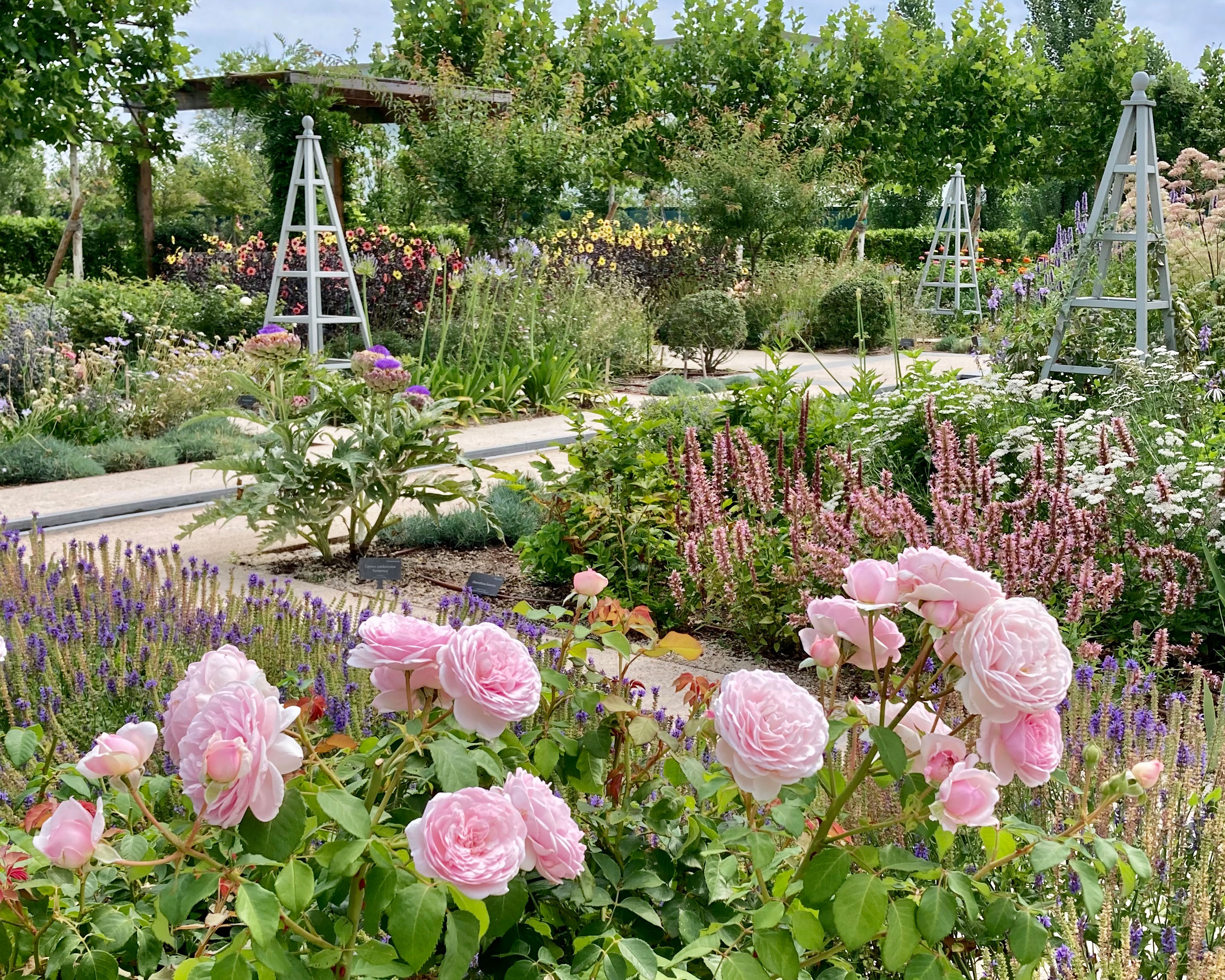
This landscape design by Tommaso Del Buono for the new corporate headquarters of a cosmetics company includes an 'Apothecary Garden' (Orto Scientifico) to display the organic plants that form the basis of their formulations, and two large central courtyards.
'The Orto Scientifico is an instrument for research, an open air ‘showroom’ and importantly a place of work but also rest and relaxation for both employees and visitors.
'A "Paradise" garden, the Orto is traditionally and practically laid out in geometrically arranged beds with plants selected and grouped in accordance to their beneficial properties and uses,' Tommaso explains.
Golfe Leste, Portugal, designed by Gavin McWilliam and Andrew Wilson
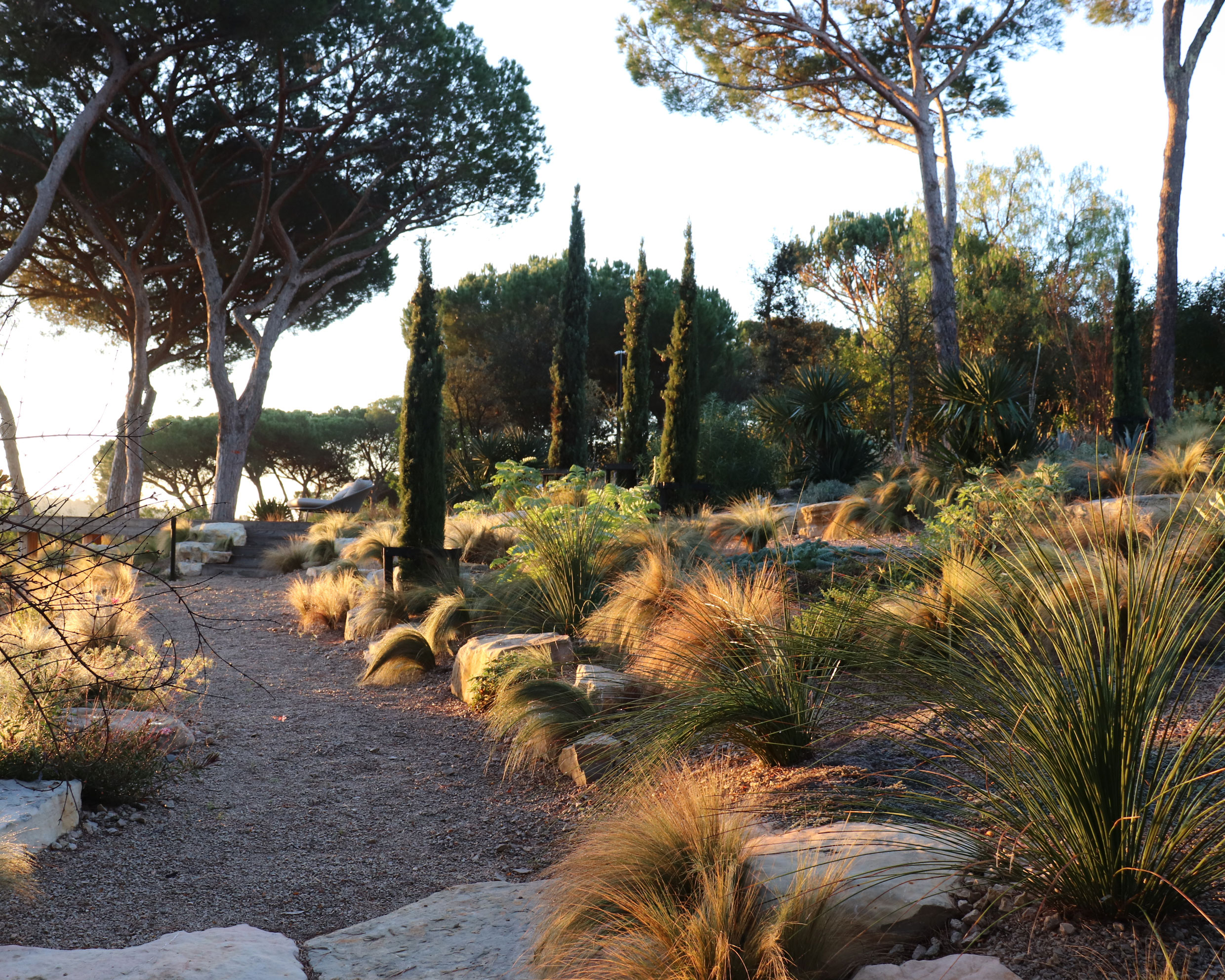
This garden located in the Portuguese Algarve was designed by Gavin McWilliam and Andrew Wilson to meet the client's brief of creating a place of sanctuary and retreat but with views of the surrounding landscape.
Dry gravel naturalistic planting is inspired by the local landscapes and habitats and in the wider garden, boulders and stone steps deal with the level changes of the sloping site, while tall Italian cypresses deliver vertical punctuation.
Gavin McWilliam says: 'The design turns its back on the high input, water thirsty gardens typical of the surrounding area, offering a new aesthetic of naturalistic and native planting that will not require irrigation beyond the establishment period, and will dramatically increase biodiversity.'
Heathside pool garden, designed by Matthew Childs
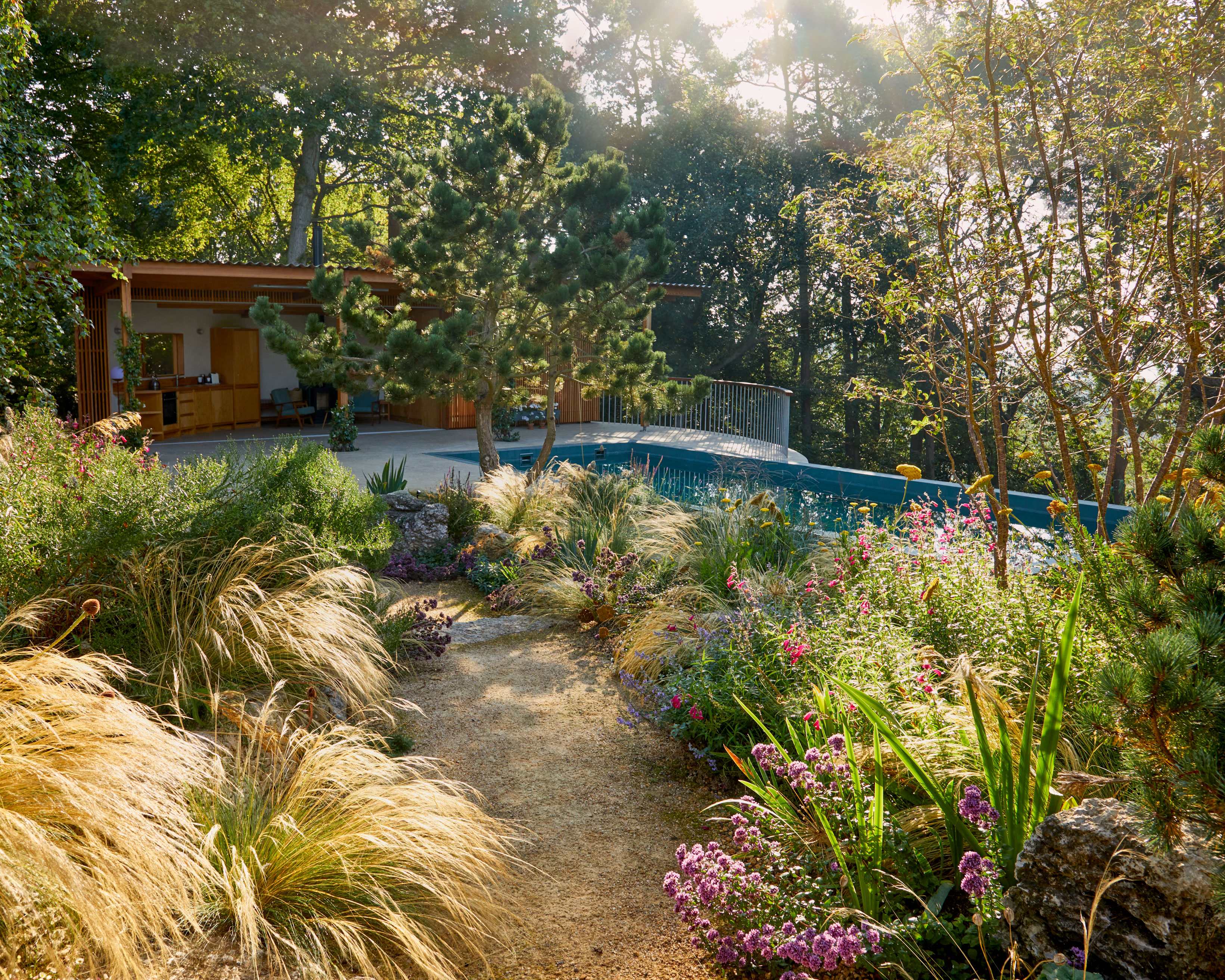
Full of interest and atmosphere, this garden design by Matthew Childs is both contemporary but also has a strong link to the natural surroundings.
The design incorporates waterfalls and a large wildlife pond which abuts a stepped limestone terrace surrounding the house, linking home with garden.
The strong, contemporary features of the pool house are balanced with soft, prairie style and pollinator friendly planting, large multi-stem birches and natural stone to give the illusion the garden had always been there.
'Our project approach was to take inspiration from the site’s history. Heathside was originally the pool house to the neighboring mansion, and had been a place for people and pleasure and we wanted to restore this. The steeply sloping topography and extensive amounts of existing Westmoreland stone were seen as a positive rather than a constraint and informed the design direction,' Matthew explains.
Kensington Courtyard, designed by Gavin McWilliam and Andrew Wilson

The simple and coherent design by Gavin McWilliam and Andrew Wilson of this small enclosed space was to provide an oasis of calm for a family to enjoy and an extension to their kitchen area.
A more coherent treatment of paving, boundaries and level change has created a calming environment.
'Due to the restricted light levels paving needed to be considered carefully in order to deliver safe use and to age well over time. The introduction of vertical planting delivered a much greater planting impact,' says Gavin McWilliam.
Le Mie Colline, Italy, designed by Tommaso Del Buono

This rural property in Tuscany sits at the heart of a new estate comprising vineyards, olive groves and areas of native woodland. Designer Tommaso Del Buono's brief from the client was to create a much expanded and ambitious garden, to include a new infinity swimming pool, productive gardens and orchards, within a framework of different spaces tailored to the clients' lifestyle.
The stony, heavy soil and relative lack of water informed and guided the selection of drought tolerant plants used.
'Given the strong character and beauty of the surrounding and nearly untouched countryside and landscape, one of our main challenges was to ensure that the new gardens and elements within them should fit naturally and harmoniously with their surroundings,' says Tommaso.
RHS Wisley, World Food Garden, designed by Ann-Marie Powell

This design of the new World Food Garden for RHS Wisley by Ann-Marie Powell was to combine and consolidate their fruit, vegetable and herb gardens.
Split into three sections, the garden was inspired by the unusual oval site. Contemporary Corten pergolas in the Main Avenue overflow with edible climbers, leading to a central water feature encircled by pleached fruit trees. Flanked by beds filled with edible annuals and perennials, the avenue provides a joyful, productive and inspiring educational experience.
Elsewhere are mixed borders of culinary herbs and edible flowers, mixed height steel raised beds in the World Food Maize allow visitors to get lost within a world of flavor of more unusual vegetable and fruit varieties, and Good to Grow beds highlight how to grow crops.
'The design needed to create a cohesive landscape with separate experimental compartments to welcome and encourage exploration by the visitor,' Ann Marie explains.
Richmond garden, designed by Tom Massey

One of the first commissions Tom Massey was awarded two years after graduating from college, this garden features dual level sawn Yorkstone dining terraces with bespoke steps, a 12m long living wall, and a water feature that runs the entire length of the garden, starting as a natural stream, transitioning into a Corten steel rill and ending in a lily pond trough.
'The garden is divided in distinct zones; close to the house it is formal in character with the crisp clean lines of sawn Yorkstone paving, further along stepping-stones lead through the lawn with its planted borders to a productive area, screened from view by bespoke louvered timber screens. At the rear of the garden is a more naturalistic woodland area,' says Tom.
Twickenham garden, designed by Tom Massey
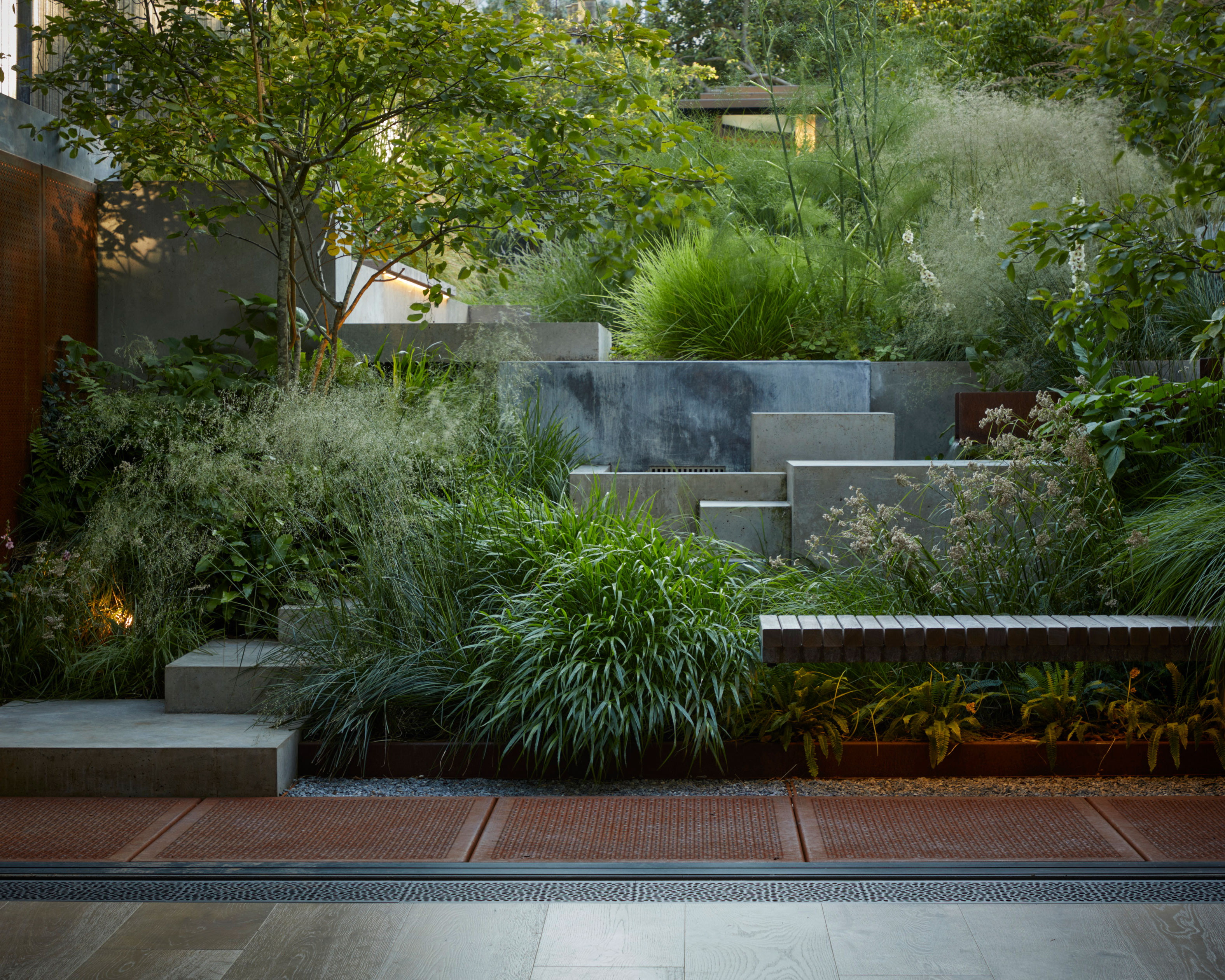
The owners of this Twickenham garden wanted an interesting and dynamic way to move from basement to ground level and that is exactly what designer Tom Massey delivered.
'Bespoke concrete cuboid steps – nicknamed the cubist cliff path – advance through a sloped bank of lush green planting and cascading concrete and Corten steel water features, providing a playful way to move from basement to ground floor level,' explains Tom.
The upper garden offers bespoke bench seating and steel planters, maintaining a continuation of the cuboid theme. The rear of the garden houses a studio with reflective glazing, surrounded by multi-stem hawthorn trees.
The easy to manage planting scheme includes blossom, scent and evergreen shrubs softened with perennials and grasses for seasonal interest, while a water feature increases the biodiversity of the garden.
West London family garden, designed by Gavin McWilliam and Andrew Wilson

The design of this London garden by Gavin McWilliam and Andrew Wilson was to focus on family socialising, leisure and dining.
Improved access into the main garden from the higher terrace and lower basement level created a stronger connection with the house, and through careful choice in planting, privacy was improved for both the front and rear gardens.
'The main aims of the design were to create a more immersive garden experience and to relate house and garden together more successfully,' says Gavin McWilliam.
Vote for your favorite design for the Society of Garden Designers People's Choice Award
The shortlisted entries for the Society of Garden Designers People's Choice Awards are listed again below. Visit the SGD website for more images of each of the designs and then vote for your favorite before 31 July 2022.
PEOPLE'S CHOICE FINALISTS:
Acomb High House
Alexander Square
A Sense of Discovery
Bishop's House, Rwanda
Chelsea Townhouse
Clapham Family Garden
Davines Village, Italy
Golfe Leste, Portugal
Heathside Pool Garden
Kensington Courtyard
'Le mie Colline, Tuscany
RHS Wisley, World Food Garden
Richmond Garden
Twickenham Garden
West London Family Garden
Matthew Wilson MSGD
Stefano Marinaz MSGD
Stefano Marinaz MSGD
Chloe Humphreys MSGD
Adolfo Harrison MSGD
Garden Club London
Tommaso Del Buono MSGD
Gavin McWilliam MSGD & Andrew Wilson FSGD
Matthew Childs
Gavin McWilliam MSGD & Andrew Wilson FSGD
Tommaso Del Buono MSGD
Ann-Marie Powell FSGD
Tom Massey MSGD
Tom Massey MSGD
Gavin McWilliam MSGD & Andrew Wilson FSGD
Rachel is senior content editor, and writes gardening content for homesandgardens.com, Homes & Gardens magazine, and its sister titles Period Living Magazine and Country Homes & Interiors. She has written for lifestyle magazines for many years, with a particular focus on gardening, historic houses and arts and crafts, but started out her journalism career in BBC radio, where she enjoyed reporting on and writing programme scripts for all manner of stories. Rachel then moved into regional lifestyle magazines, where the topics she wrote about, and people she interviewed, were as varied and eclectic as they were on radio. Always harboring a passion for homes and gardens, she jumped at the opportunity to work on The English Home and The English Garden magazines for a number of years, before joining the Period Living team.
